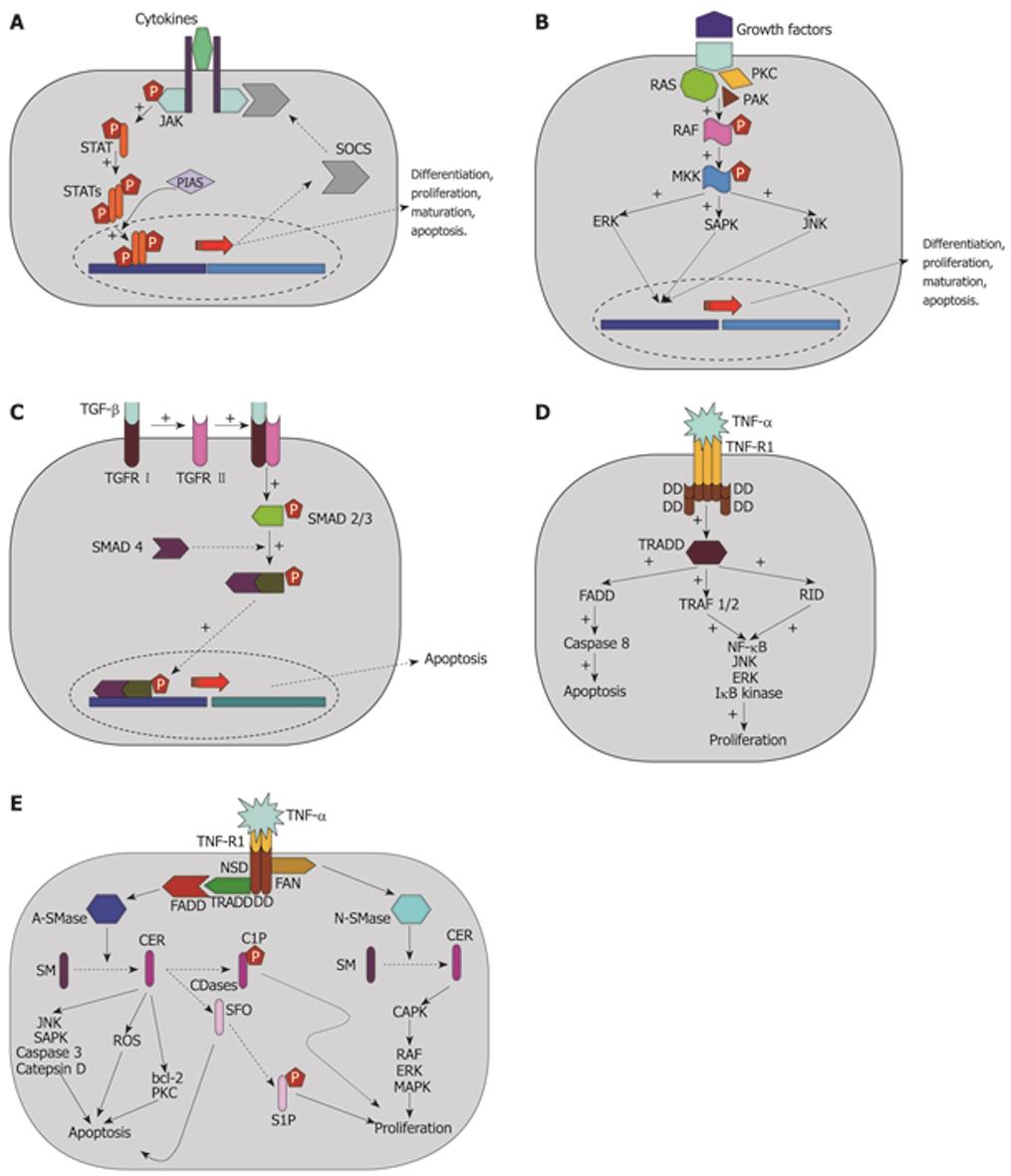Copyright
©2009 The WJG Press and Baishideng.
World J Gastroenterol. May 14, 2009; 15(18): 2184-2189
Published online May 14, 2009. doi: 10.3748/wjg.15.2184
Published online May 14, 2009. doi: 10.3748/wjg.15.2184
Figure 1 Signal transduction pathway.
A: Janus kinase (JAK); B: Mitogen-activated protein kinase (MAPK); C: Transforming growth factor-β (TGF-β); D: Tumor necrosis factor α (TNF-α); E: Sphingolipid. +: Activation; P: Phosphorylation; STAT: Signal transducers and activators of transcription; STATs: Activated STAT; PIAS: Proteins inhibitor of activated STAT; SOCS: Suppressor of cytokine signaling; RAS: Small GTP-binding protein; PKC: Protein kinase C; PAK: P21-activated kinase; RAF: Serine/threonine kinase; MKK: Mitogen-activated protein kinase kinase; ERK: Extracellular signal-regulated protein kinase; SAPK: Stress activated protein kinase; JNK: C-Jun-NH2-terminal kinase; TGFR I and II: Membrane receptors of TGF-β; SMAD: Class of proteins that modulate the activity of transforming growth factor β ligands; TNF-R1: Membrane receptor of TNF-α; DD: Death domain; TRADD: TNFR associated protein with death domain; FADD: Fas associated death domain; TRAF 1/2: TNF-associated factor-2; RID:Receptor-interacting protein; NFκB: Transcription factor; NSD: TNF-R1 domain activating neutral sphingomyelinase; FAN: TNF-R1 adaptor protein; A-SMase: Acid sphingomyelinase; N-SMase: Neutral sphingomyelinase; SM: Sphingomyelin; CER: Ceramide; C1P: Ceramide-1-phosphate; CDases: Ceramidases; SFO: Sphingosine; S1P: Sphingosine-1-phosphate; ROS: Reactive oxygen species; CAPK: Ceramide-activated kinase.
- Citation: Dabrowska MM, Panasiuk A, Flisiak R. Signal transduction pathways in liver and the influence of hepatitis C virus infection on their activities. World J Gastroenterol 2009; 15(18): 2184-2189
- URL: https://www.wjgnet.com/1007-9327/full/v15/i18/2184.htm
- DOI: https://dx.doi.org/10.3748/wjg.15.2184









